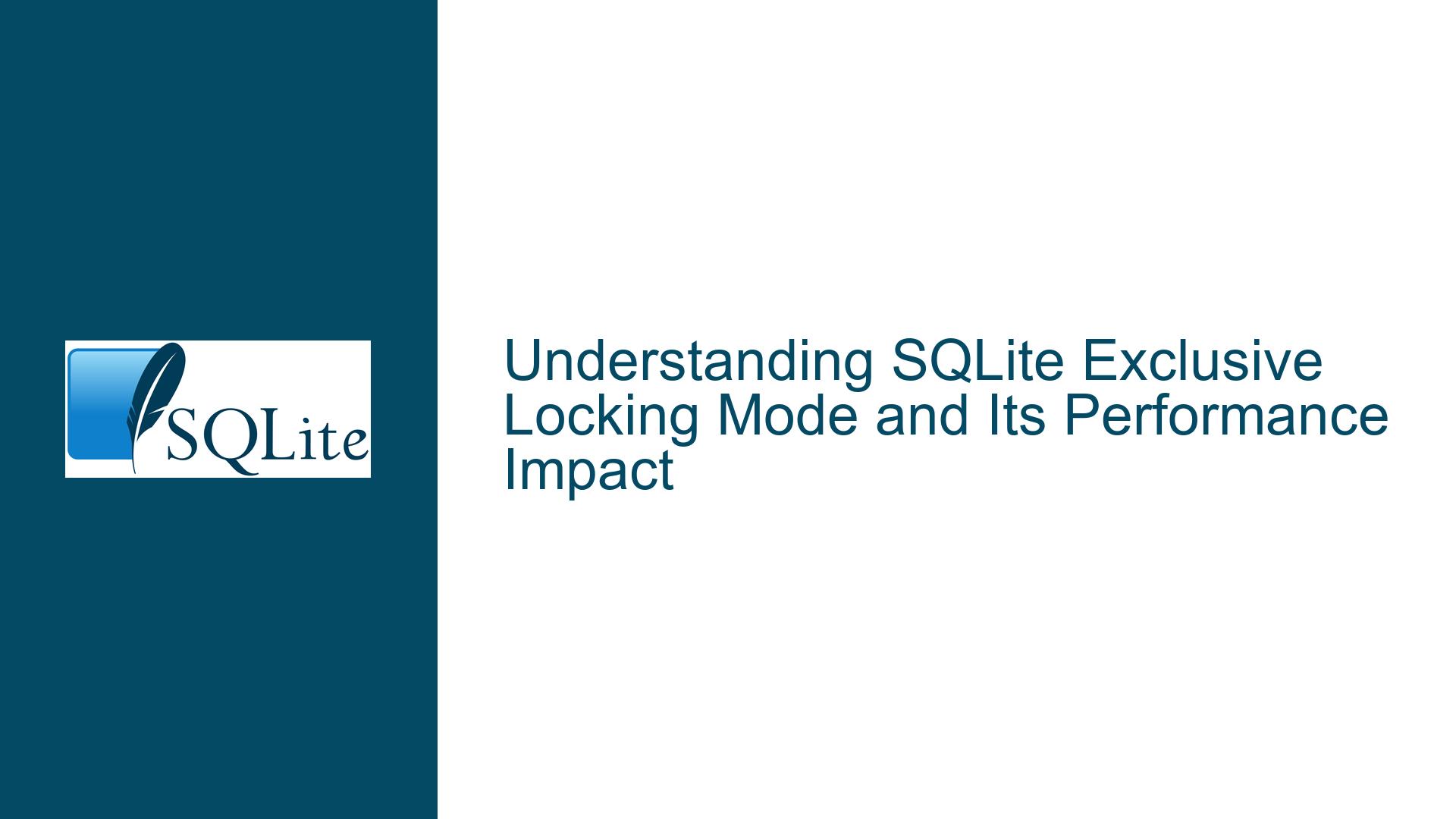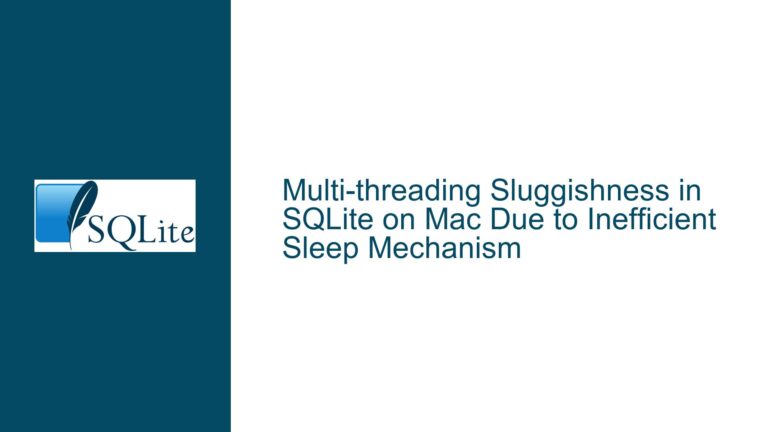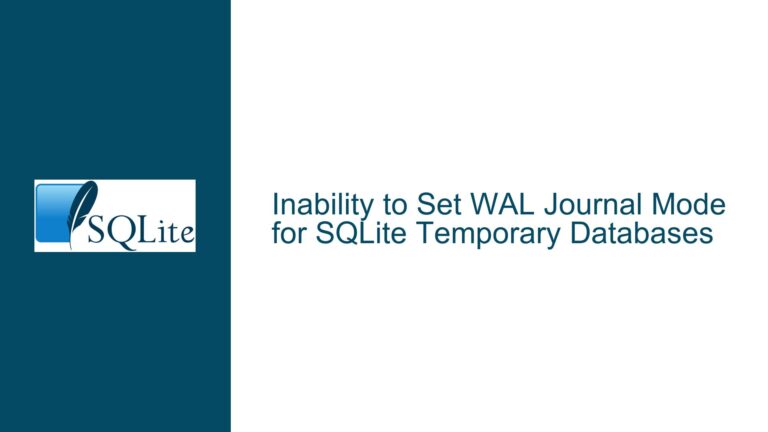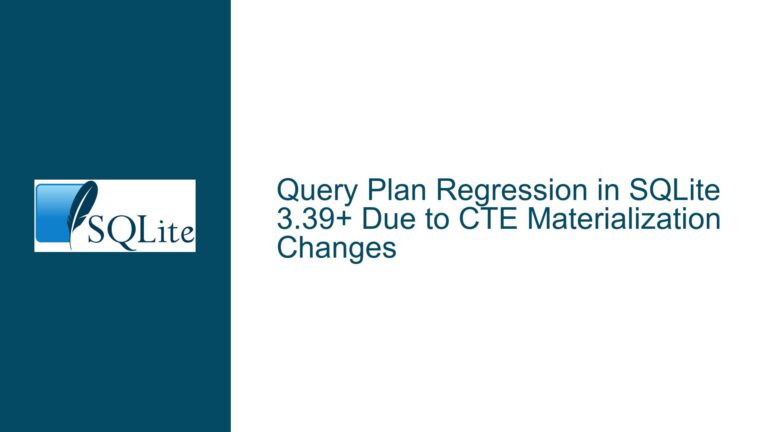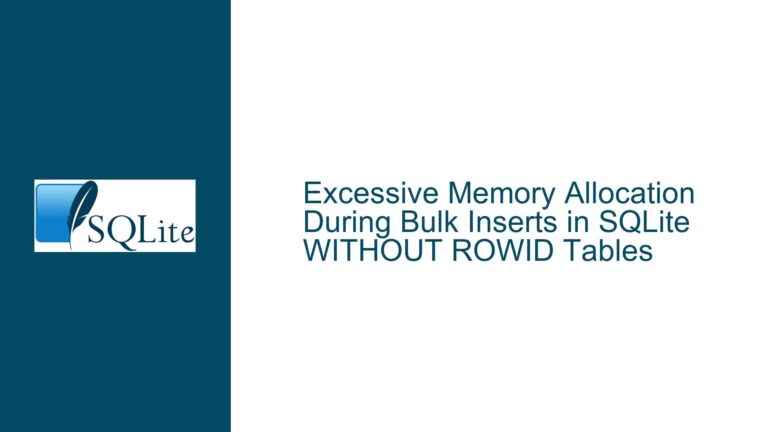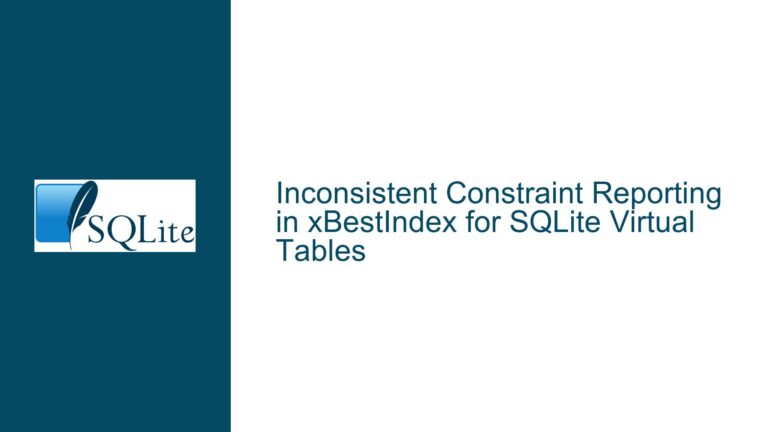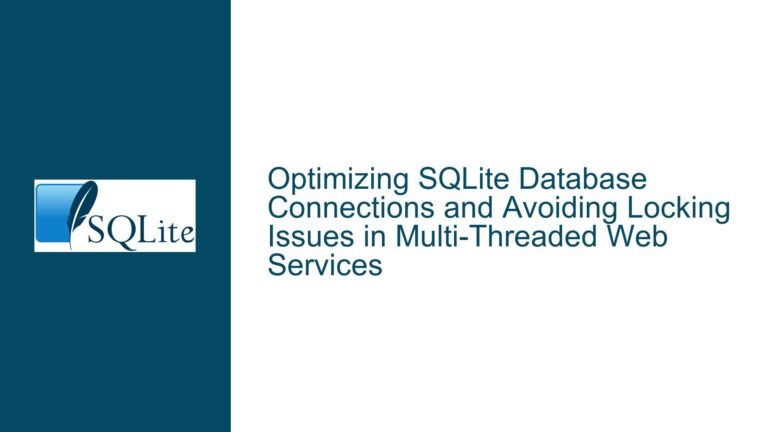SQLite Exclusive Locking Mode and Its Performance Impact
SQLite Performance Gains with Exclusive Locking Mode
When conducting performance tests on SQLite using tools like speedtest1, one of the most significant configuration options that can influence the results is the "exclusive" locking mode. This mode, when enabled, can lead to noticeable improvements in the speed of database operations. The primary reason for this performance boost lies in how SQLite handles file locks and concurrency. By setting the locking mode to exclusive, SQLite ensures that the database file is locked exclusively by the current process, preventing other processes from accessing the database simultaneously. This reduction in contention for the database file can lead to faster execution times for database operations, as the overhead associated with managing multiple concurrent accesses is eliminated.
The exclusive locking mode is particularly beneficial in scenarios where the database is being accessed by a single process or where the workload is such that concurrent access is minimal. In these cases, the exclusive mode can significantly reduce the latency associated with acquiring and releasing locks, leading to a more streamlined and efficient execution of database transactions. However, it is important to note that while exclusive locking can improve performance, it also limits the database’s ability to handle concurrent accesses, which can be a critical requirement in multi-user environments.
Interplay Between Exclusive Locking Mode and Write Operations
The performance gains observed when enabling the exclusive locking mode in SQLite are closely tied to the way the database handles write operations. In a typical SQLite setup, write operations require the database to acquire a write lock on the database file. This lock ensures that no other process can modify the database while the write operation is in progress. However, in a non-exclusive locking mode, the database must also manage shared locks, which allow multiple processes to read from the database simultaneously. This management of shared and exclusive locks introduces additional overhead, as the database must ensure that these locks are acquired and released in a manner that maintains data consistency.
When the exclusive locking mode is enabled, SQLite bypasses the need to manage shared locks altogether. Instead, the database file is locked exclusively by the current process, allowing write operations to proceed without the overhead associated with shared lock management. This can lead to a significant reduction in the time required to complete write operations, as the database no longer needs to coordinate with other processes that may be attempting to read from or write to the database. However, this also means that other processes will be unable to access the database while the exclusive lock is held, which can lead to increased contention and potential bottlenecks in multi-user environments.
Optimizing SQLite Performance with PRAGMA journal_mode and Exclusive Locking
To fully leverage the performance benefits of the exclusive locking mode in SQLite, it is often necessary to consider other configuration options that can influence the database’s behavior. One such option is the PRAGMA journal_mode, which controls how SQLite handles transaction logging. The journal mode can have a significant impact on the performance of write operations, particularly in scenarios where the exclusive locking mode is enabled.
When the exclusive locking mode is enabled, SQLite can take advantage of the reduced contention for the database file to optimize the way it handles transaction logging. For example, setting the journal mode to "WAL" (Write-Ahead Logging) can further enhance performance by allowing multiple processes to read from the database while a single process holds an exclusive lock for write operations. This combination of exclusive locking and WAL mode can lead to a more efficient use of system resources, as the database can process write operations more quickly while still allowing concurrent read operations.
However, it is important to carefully consider the trade-offs associated with these configuration options. While the combination of exclusive locking and WAL mode can improve performance, it can also increase the complexity of the database’s locking and logging mechanisms. This increased complexity can lead to potential issues, such as increased memory usage or difficulties in recovering from crashes. Therefore, it is essential to thoroughly test any changes to the database configuration in a controlled environment before deploying them in a production setting.
In conclusion, the exclusive locking mode in SQLite can provide significant performance benefits, particularly in scenarios where the database is accessed by a single process or where concurrent access is minimal. By understanding the interplay between exclusive locking, write operations, and other configuration options such as PRAGMA journal_mode, database administrators can optimize the performance of their SQLite databases to meet the specific needs of their applications. However, it is crucial to carefully consider the trade-offs associated with these optimizations and to thoroughly test any changes to the database configuration to ensure that they do not introduce unintended issues.
